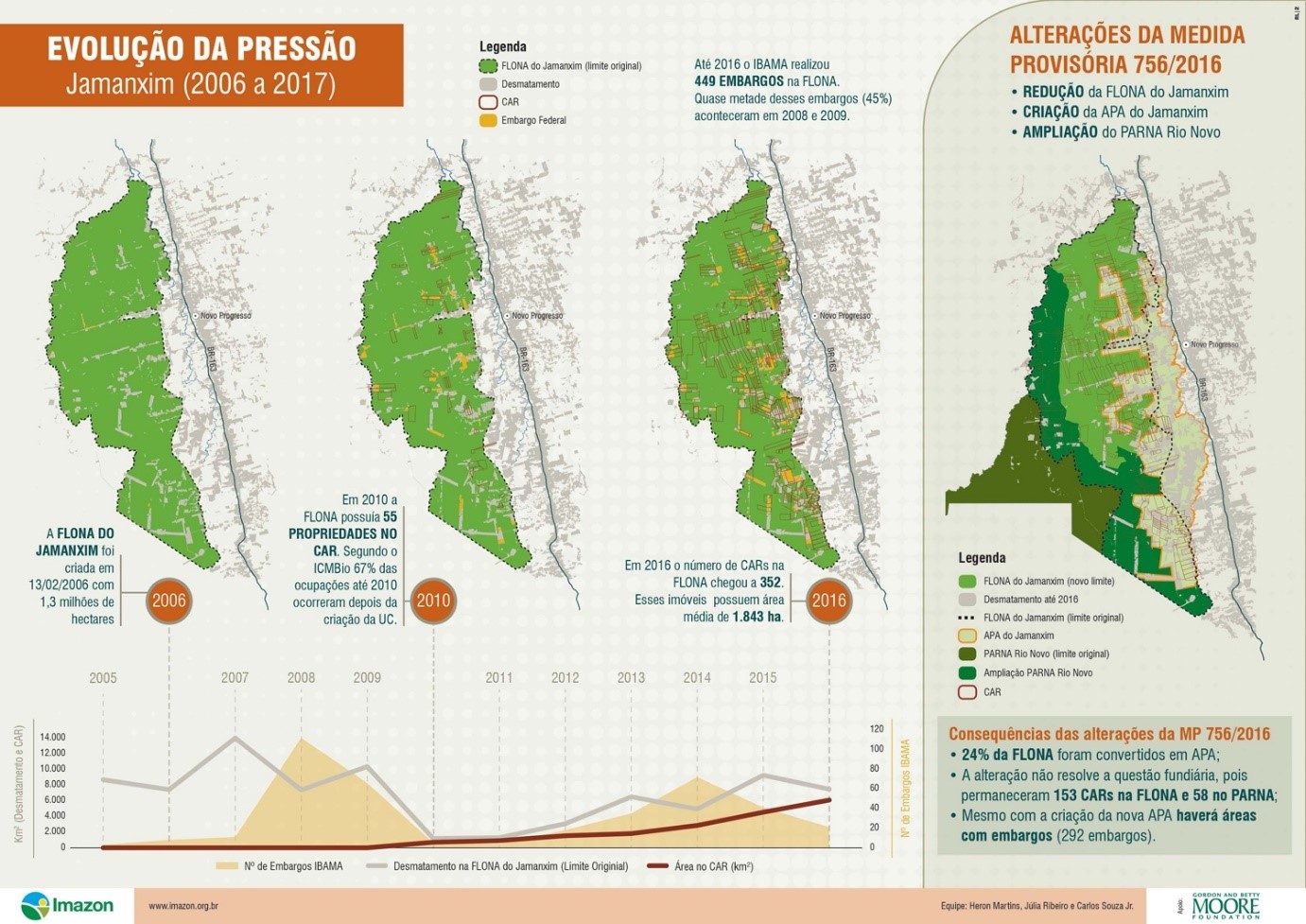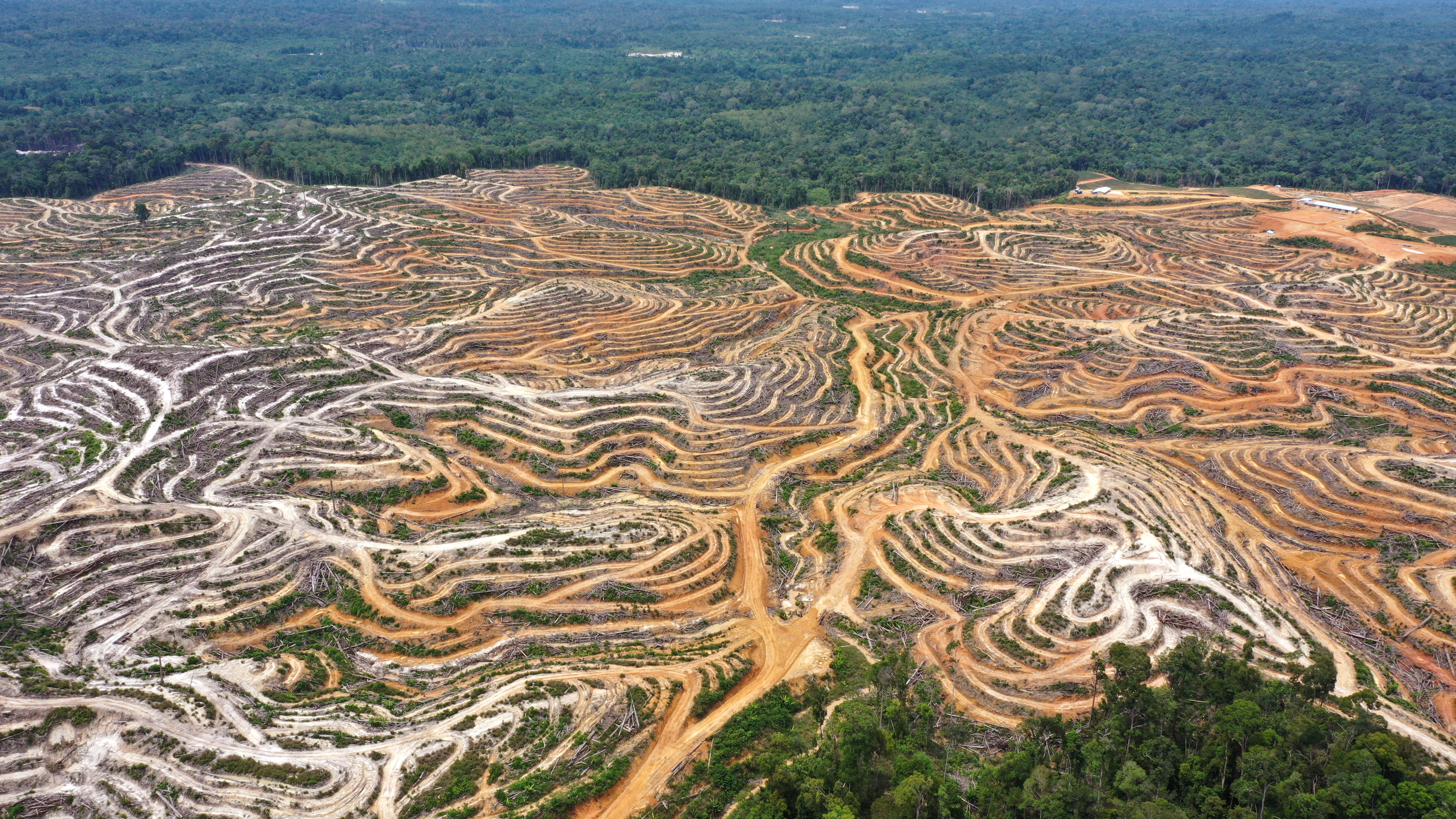
Imazon's analysis of changes to the National Forest boundaries and illegal occupations
New analysis published by the NGO Imazon has
found that the downgrading of protection for a huge area of rainforest last
December was “a Christmas present to land grabbers”, which will encourage them
to continue to illegally occupy land throughout the Amazon.
In December 2016, as reported by Earthsight, a
presidential decree issued by Brazilian President Michel Temer altered the
boundaries of the Jamanxim National Forest, downgrading 305,000 of its 1.3
million hectares from National Forest status to an Area of Environmental
Protection (APA). APA is a lower category of environmental protection, which
allows private property and some deforestation. Including some other changes,
Jamanxim has lost 57% of its original area.
Brazilian civil society accused the government of
effectively granting amnesty to illegal farmers, ranchers and settlers who had
illegally occupied land within the forest after its establishment as a protected
area.
The industrial agribusiness lobby has pressured the federal
government to change the boundaries of Jamanxim for years. It had been argued
that the move would allow landholders who had been there prior to the creation
of the National Forest in 2006, who therefore have legitimate claims to their
properties, to finally regularise their land.
However, according to Imazon’s analysis, between 2010 and
2016 the number of properties registered within the Jamanxim National Forest
increased six-fold, from 55 to 352. O
Eco, a Brazilian news portal, maintains that these registrations – issued
under the Brazilian rural registry, known as CAR – can be made by anyone who
claims title to land, and do not necessarily mean that the properties are
legal. In fact, the CAR is allegedly becoming a means for landowners to affirm
their entitlement to a plot of land without necessarily having a legal right to
it.
Imazon’s study confirms these concerns, arguing that the
boundary change was “a Christmas present to land grabbers”, by legitimising
illegal occupations.
Imazon’s study shows that more than 60% of occupations
within the National Forest took place after it was established in 2006, and are
therefore illegal. Their analysis of the previous and new forest boundaries,
and the deforestation hotspots, indicate that the measure is aimed at removing
occupied land from the National Forest.
Imazon says that this objective is only partially achieved
with the boundary change, because 80 properties continue to partially overlap
with the new Jamanxim National Forest while another 153 fall entirely within
it.
Imazon’s study also confirms that large-scale farms
represent the majority of occupied areas within the original National Forest,
contradicting the claim that the Jamanxim is occupied by small farmers. The
original National Forest is estimated to have over 110,000 heads of
cattle on extensive pastures and 250 rural properties.
The controversy around the measure continues. The Chico
Mendes Institute for Biodiversity Conservation claims that the boundary change
will not lead to further land grabbing or deforestation. Imazon argues that the
presidential decree signalled that environmental crimes can be worthwhile.
Between 2006 and 2016, IBAMA (the federal environment
enforcement agency) embargoed 449 areas within Jamanxim due to illegal
deforestation. However, proposals aimed at reducing the Jamanxim boundaries
further are currently circulating in the Senate, which if approved would
transform almost the entire unit into an APA.



